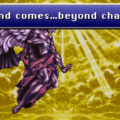Semantic Nonsense: Ducklevania

Several of the TV shows I’ve been following ended this year. Though cutting out miniseries culls this list a fair amount, and I’ve already written at length about Wandavision, at least, but there’s still something to be said for a couple other shows.
The end of Ducktales (2019)
It has been a wild ride for the Ducktales reboot, and the cancellation after three seasons feels rather hollow. It’s like a decision made out of convenience rather than because the story had run its course or the creative team was running on empty. Indeed, their efforts to revive the entire 80s-90s Disney television canon as part of the show in addition to envisioning every element of Donald Duck’s 80-year filmography still had plenty of elements to draw from. As such, it seems like the show has died leaving its work unfinished save for merely reiterating its theme of family.
While I was concerned that the new show would not escape the long shadow of the original blockbuster, I find the opposite is true now. I loved the original Ducktales as a kid, but having gone back to it after enjoying the new show… let’s just say it wouldn’t land on any of the adult-friendly lists.
That’s half of what charmed me about the reboot. It took things I loved from my childhood that hadn’t withstood the test of time and made them fresh and enjoyable again. It stimulated scholars of Disney by bringing up as much as it could from the 400-bob “Uncle $crooge” comic books dating all the way back to the ’50s. And it expanded the material in so many ways that made sense. I can only hope that the revised, differentiated Hewey, Dewey and Louie become the dominant version in Disney media going forward. And daring to ask, let alone answer, who was their mother and wherever happened to her, was a great hook that made story hey for a whole season.
And the other half was how the show unwound. The new Ducktales, as is custom for contemporary all-ages animation style, was a show about people whose personalities had been exaggerated and stretched to beyond reason. To say the entire cast was letting their respective freak flags fly would be putting it mildly, even with my penchant for dry understatement. And it was rather sweet to to see the freakishness accepted (if not always celebrated) and for them to succeed because of rather in spite of said freakishness.
The end of Castlevania
After 32 episodes across four seasons (though the four-episode first season is probably a glorified pilot and perhaps we should simply combine the first two), Netflix’s Castlevania took its bow. What started as an adaptation of Dracula’s Curse and grew to greatly expand the content but somehow never found time for Grand Danasty.
The series remained consistent throughout. From its crapsack world setting, to its fluid and gorgeous fight scenes to its extreme devotion to being the goriest show ever animated, the show unapologetically brought the world of the game to life. And it was a fun retelling. Season 4 pays off the mass amount of setup from Season 3 (even the things that didn’t appear to be setting up anything), though I’m disappointed that the writers skipped Issac past some extra character development in between seasons that ought to have been shown. The series does manage to deal with its plot threads, and manages to weave in a famous boss from the games as a nice bonus.
But Castlevania is another show that feels like it went before its time. While I was hoping for a full Trevor Belmont omnibus out of the show, Curse of Darkness unfolded so differently you’d be excused for thinking the show had merely borrowed Hector, Issac and St. Germain from it. Also odd was how many times the series revisited the death of Lisa without one placing Alucard there, or mentioning her final words to him which would have been germaine to the plot.
Perhaps part of this is due to a series of sexual harassment allegations on writer and executive producer Warren Ellis. While the rest of the team and Netflix itself have expressed interest in doing more with Castlevania, they’re making a clean break with Ellis by wrapping up the storyline he was involved in and excluding him from future plans.
When more Castlevania comes, and which era of the franchise it will be following is nebulous at best for now. Different statements have called it both a spin-off and very much NOT a spin-off… inconsistent messaging is a sure sign that nobody’s laid the groundwork, so I won’t expect any word on the franchise’s future in television for some time.
Kit Kat of the week: Key Lime Pie with special guest: snobbery
So I’m not so sure what the heck Hershey is thinking in their efforts to catch up to the reputation of Nestle’s efforts with the brand outside the U.S.
The famous diverse Kit Kats from overseas that pushed Hershey into upping its game? They’re predominantly based on fruits and teas, as you’ve seen over the years in this very column. But Hershey has been on a desert/pastry bender. If you want to lazily suggest “Because America,” I’d be forced to agree with you, as that tracks. Though that doesn’t explain why Hershey killed off its existing personal varieties, Mint (Christmas) and Triple Chocolate (Halloween), which were genuinely good work.
So here’s the next desert Kit Kat, and all I’m thinking is it could have just been straight-up lime. The cating does it’s best to capture the flavors of the lime pie, whipped cream and a graham cracker crust all together. And I certainly give it credit that all three tastes are distinguishable, if perhaps overly strong.
But it also underscores just how far Hershey has to catch up on technique. Nestle would have omitted the graham cracker crust flavor entirely from the covering and incorporated it into the wafer instead. Hershey still has no wafer game at all.





